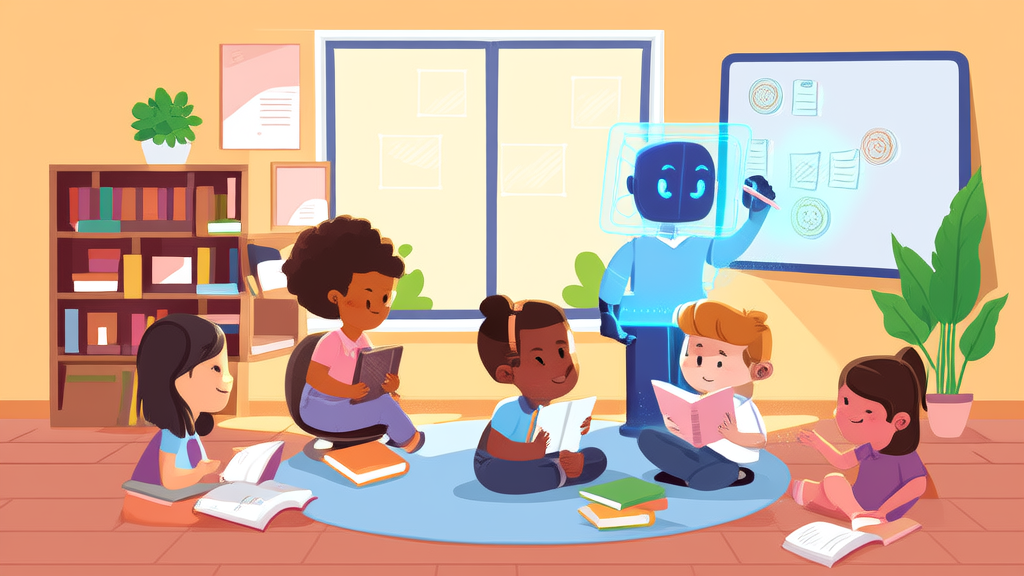Unlock 20% Gains in K12 Education with Blended Learning and AI

Transforming K12 Education: Innovations, Insights, and Inspiration for 2025
Welcome to the future of K12 education! As we navigate through the dynamic landscape of teaching and learning in 2025, it's clear that the traditional methods are evolving. This post aims to explore the latest teaching methodologies, child development insights, educational technology trends, and offer practical tips for both parents and educators. Whether you're a parent looking to support your child's education or an educator seeking to enhance your teaching, this guide is for you.
Latest Teaching Methodologies and Their Effectiveness
In recent years, the shift towards more student-centered and interactive approaches has been significant. One such method is project-based learning (PBL), which encourages students to engage in real-world projects that require critical thinking, collaboration, and problem-solving. According to a study by the Buck Institute for Education, PBL can lead to higher academic achievement and improved student engagement.
Another effective approach is blended learning, which combines traditional face-to-face classroom instruction with online learning. This hybrid model allows for personalized learning experiences, as students can work at their own pace and access resources tailored to their needs. A case study from the Clayton Christensen Institute showed that schools implementing blended learning saw a 20% improvement in student performance.
Child Development Insights and Research
Understanding how children develop is crucial for creating effective educational strategies. Recent research in neuroscience has shed light on the importance of executive function skills, such as self-control, working memory, and cognitive flexibility. These skills are not only essential for academic success but also for life-long learning and well-being. The Center on the Developing Child at Harvard University recommends incorporating activities that build these skills into the curriculum, such as mindfulness exercises and structured play.
Additionally, the concept of growth mindset has gained traction in educational circles. Developed by psychologist Carol Dweck, growth mindset emphasizes the belief that abilities and intelligence can be developed through dedication and hard work. Schools that foster a growth mindset environment see increased motivation and resilience among students, leading to better academic outcomes.
Educational Technology Trends
Technology continues to play a pivotal role in K12 education, offering new tools and platforms that enhance the learning experience. Artificial Intelligence (AI) is one of the most promising trends, with AI-powered adaptive learning systems that provide personalized feedback and adjust content based on each student's progress. For example, DreamBox Learning uses AI to deliver customized math lessons, resulting in a 30% increase in student proficiency.
Virtual and Augmented Reality (VR/AR) are also making waves, providing immersive and interactive learning experiences. Google Expeditions, for instance, allows students to take virtual field trips to historical sites, museums, and even outer space, making learning more engaging and memorable.
Practical Tips for Parents and Teachers
For parents, staying involved in your child's education is key. Here are some actionable tips:
- Communicate regularly with teachers: Stay informed about your child's progress and any areas where they may need extra support.
- Create a conducive learning environment at home: Designate a quiet, organized space for homework and study, and minimize distractions.
- Encourage a love for learning: Read together, visit museums, and engage in educational activities that spark curiosity and interest.
For teachers, here are some practical strategies to implement:
- Integrate technology thoughtfully: Use tech tools to enhance, not replace, meaningful interactions and hands-on learning.
- Foster a positive classroom culture: Promote a growth mindset, encourage collaboration, and celebrate effort and progress.
- Provide regular, constructive feedback: Offer specific, actionable feedback that helps students understand their strengths and areas for improvement.
Conclusion: Embrace the Future of K12 Education
The future of K12 education is bright and full of possibilities. By embracing the latest teaching methodologies, understanding child development, leveraging educational technology, and following practical tips, we can create a more effective and engaging learning environment for our children. Let's work together to inspire the next generation and equip them with the skills they need to thrive in an ever-changing world.
Join the conversation and share your thoughts and experiences in the comments below. Together, we can make a difference in the lives of our students and shape a brighter future for all.